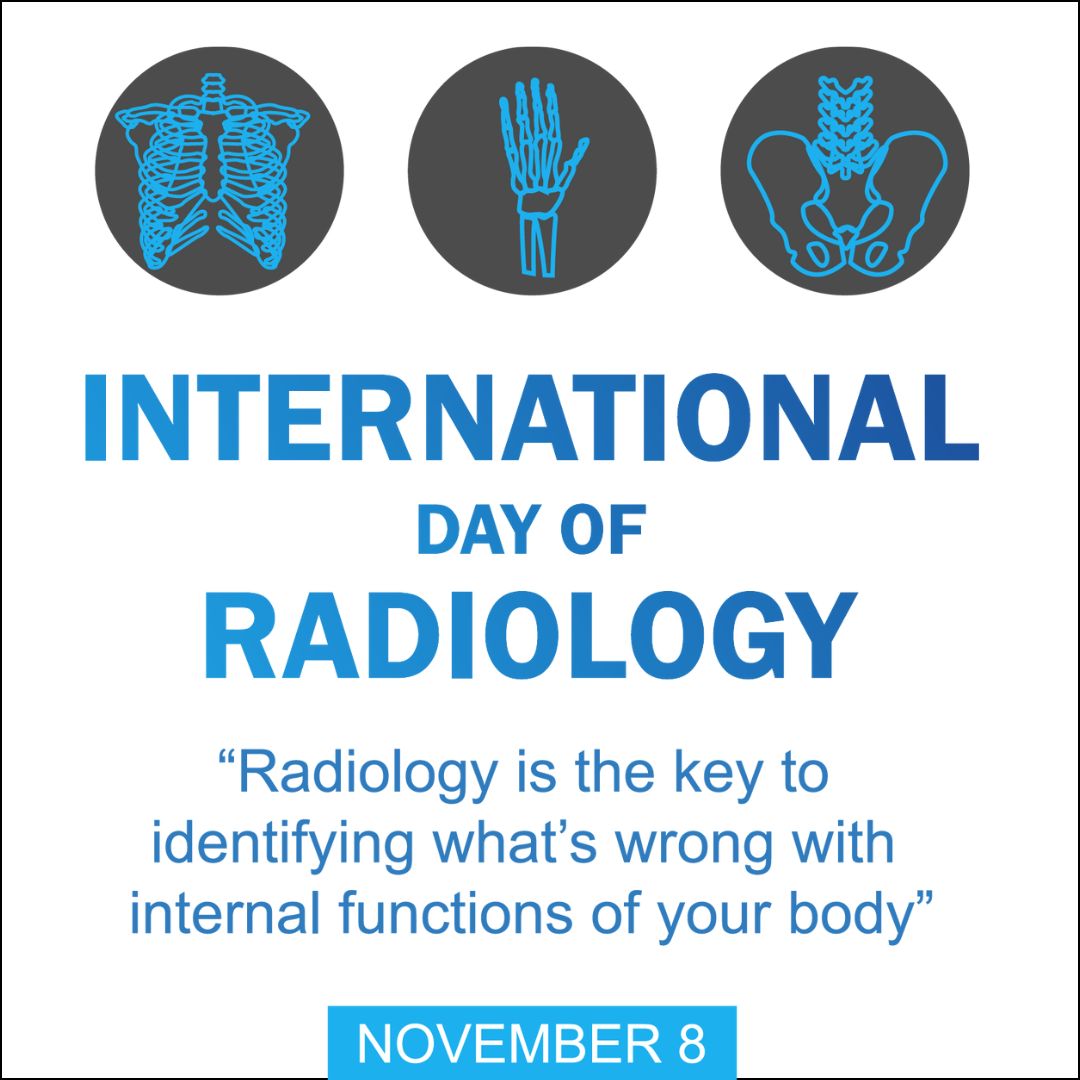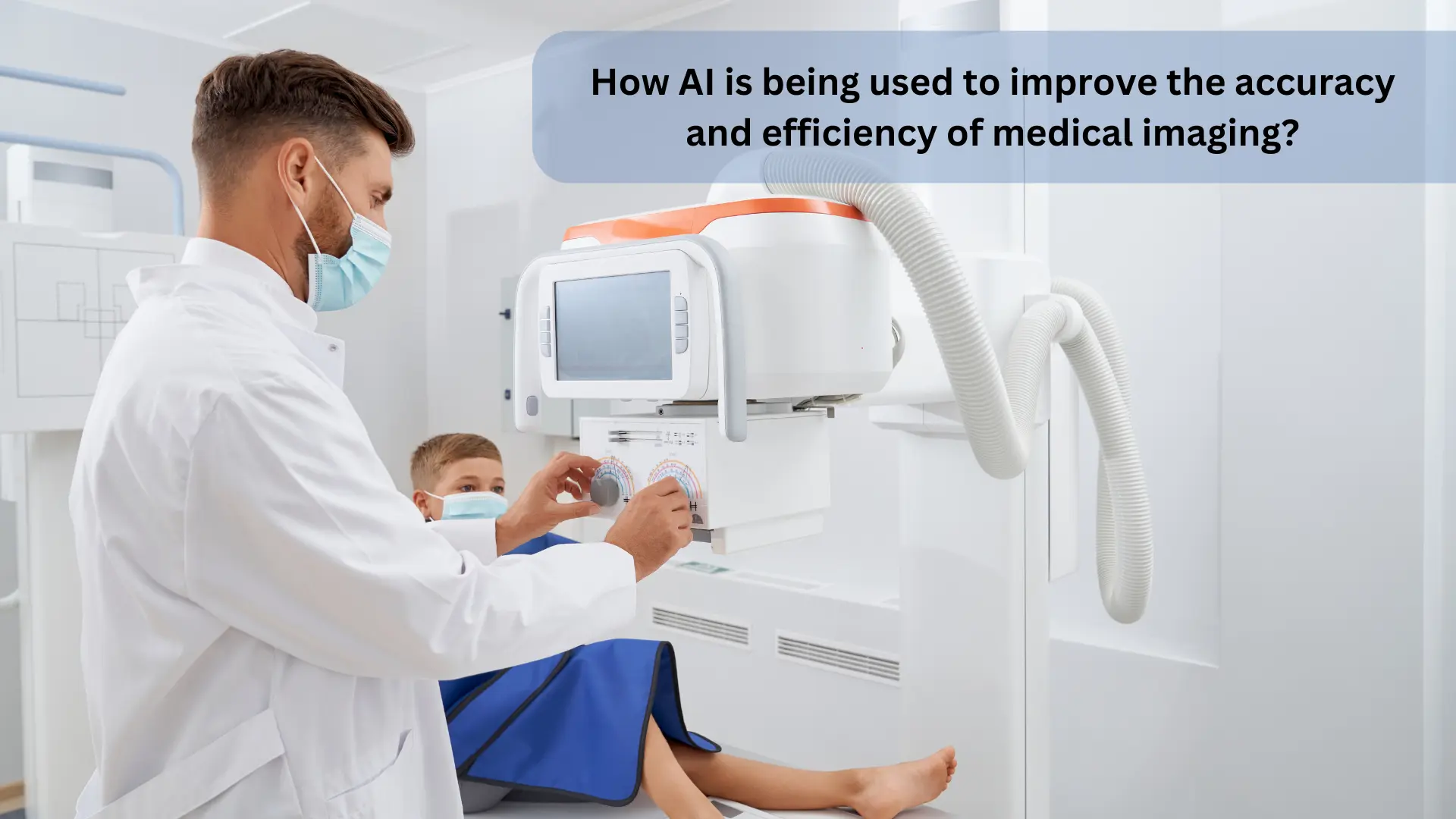November 8th marks an important day for healthcare professionals worldwide - the International Day of Radiology. On this occasion, we celebrate the remarkable advancements in the field of medical imaging and acknowledge the contributions of radiologists in diagnosing and treating various medical conditions. However, the landscape of radiology is undergoing a significant transformation, thanks to the integration of Artificial Intelligence (AI). This cutting-edge technology is enhancing the accuracy and efficiency of medical imaging, redefining the way we approach diagnosis and treatment.
International Day of Radiology
Before delving into the transformative role of AI in medical imaging, let's take a moment to understand the significance of the International Day of Radiology. Established in 2012, this global event celebrates the discovery of X-rays by Wilhelm Conrad Roentgen in 1895. It aims to raise awareness about the vital role that radiology plays in healthcare and promote the importance of medical imaging in improving patient care.
Over the years, radiology has evolved from a purely diagnostic tool to an integral part of treatment planning and monitoring. Radiologists have become indispensable in identifying and understanding the extent of various medical conditions, including cancer, heart disease, and neurological disorders. However, the growing demand for more accurate and timely diagnoses, along with the increasing complexity of medical imaging data, has paved the way for AI to make a significant impact.

Role of AI in Medical Imaging
AI, particularly in the form of deep learning algorithms and machine learning, is proving to be a game-changer in the field of medical imaging. Here's how AI is contributing to the accuracy and efficiency of medical imaging:
Enhanced Image Analysis:
AI algorithms are capable of analyzing medical images, such as X-rays, CT scans, and MRIs, with unprecedented precision. They can identify subtle abnormalities that might be missed by the human eye, leading to more accurate diagnoses. AI can detect early signs of diseases, including cancer, fractures, and neurological disorders, improving the chances of successful treatment.
Faster Diagnoses:
AI significantly reduces the time required for image interpretation. Radiologists can now quickly review AI-generated reports, allowing them to focus on complex cases and make quicker decisions in emergencies. This not only improves patient outcomes but also streamlines the entire healthcare process.
Personalized Medicine:
AI can help tailor treatment plans by analyzing patient-specific data and suggesting the most effective therapies. This level of personalization can lead to better treatment outcomes and reduced side effects, as healthcare providers can make decisions based on the patient's unique characteristics.
Reducing Human Error:
Radiology is a demanding field, and even the most experienced radiologists may occasionally make errors due to factors like fatigue or distractions. AI systems are immune to such factors, offering consistent and error-free analysis, which can be especially critical in situations where high precision is required.
Automating Repetitive Tasks:
AI can handle repetitive and time-consuming tasks, such as image segmentation, measurement, and data organization. This frees up radiologists to focus on more complex and intellectually demanding aspects of their work.
Predictive Analytics:
AI can also assist in predicting disease progression and the likelihood of complications. This proactive approach allows healthcare providers to intervene early, potentially preventing severe health issues and improving patient care.
Real-Life Applications:
AI's impact on medical imaging is already evident in various real-life applications. Some notable examples include:
Cancer Detection:
AI algorithms are being used to detect early-stage cancers in mammograms, identify abnormalities in chest X-rays, and even analyze pathology slides to predict cancer subtypes. These advancements are crucial in improving survival rates and treatment outcomes for cancer patients.
Neuroimaging:
AI aids in the interpretation of neuroimaging scans, such as MRI and CT scans, by identifying anomalies associated with conditions like Alzheimer's disease, multiple sclerosis, and stroke. Early detection of neurological disorders can significantly improve patient care and quality of life.
Cardiac Imaging:
AI algorithms can analyze cardiac images to identify heart diseases, including coronary artery disease and heart failure. The ability to detect heart conditions accurately and efficiently is essential in preventing cardiovascular events and improving patient outcomes.
Emergency Radiology:
In emergency situations, every minute counts. AI can quickly triage trauma patients based on imaging data, helping healthcare providers prioritize treatment and potentially saving lives.
Musculoskeletal Imaging:
AI is assisting in diagnosing fractures, joint abnormalities, and musculoskeletal conditions. This is particularly useful in emergency departments, where quick and accurate assessments are essential.
Radiology Workflow Optimization:
AI tools are streamlining radiology workflows by automating image routing, report generation, and quality control. This optimization enhances the efficiency of radiology departments and reduces the time patients spend waiting for results.
Future of AI in Medical Imaging:
As AI continues to advance, its role in medical imaging is expected to grow significantly. Here are some exciting possibilities for the future:
Multimodal Imaging:
AI is becoming more adept at analyzing multiple types of medical images simultaneously, allowing for a more comprehensive and accurate diagnosis. Combining data from different modalities, such as X-rays, CT scans, and MRIs, can provide a more complete understanding of a patient's condition.
Virtual Radiologists:
AI-driven virtual radiologists may become a reality, capable of providing 24/7 coverage for image interpretation. This will be especially beneficial for healthcare facilities with limited access to radiologists.
Integration with Electronic Health Records (EHRs):
AI can be seamlessly integrated into EHR systems to provide a holistic view of a patient's health history. Radiologists and other healthcare professionals will have quick access to both imaging and clinical data for more informed decision-making.
Education and Training:
AI can assist in radiology education and training by simulating complex cases, helping new radiologists refine their skills and stay up to date with the latest developments in medical imaging.
Remote Diagnoses:
AI-powered tools are making it possible to provide remote diagnoses, which can be especially valuable in underserved or remote areas. Patients can receive timely evaluations without the need to travel long distances.
Quality Assurance:
AI will play a vital role in ensuring the quality and consistency of medical imaging. It can automatically flag potential errors, helping healthcare providers maintain high standards of care.
Conclusion:
The International Day of Radiology is an occasion to recognize the indispensable role of radiologists and celebrate the incredible advances in medical imaging. AI's integration into the field is revolutionizing the way we approach healthcare, improving the accuracy and efficiency of diagnoses, and ultimately enhancing patient care.
As we look to the future, the possibilities are boundless. With AI's continued development, we can expect even more precise, timely, and personalized diagnoses and treatments. The synergy between human expertise and AI's analytical power promises to unlock new frontiers in healthcare, ultimately benefiting patients around the world.
On this International Day of Radiology, let us embrace the transformative potential of AI in medical imaging and celebrate the dedicated professionals who are making these innovations a reality. Together, we are shaping the future of healthcare, one image at a time.
.webp)














